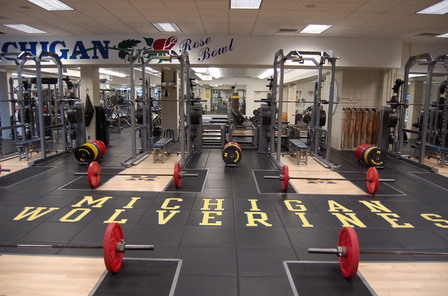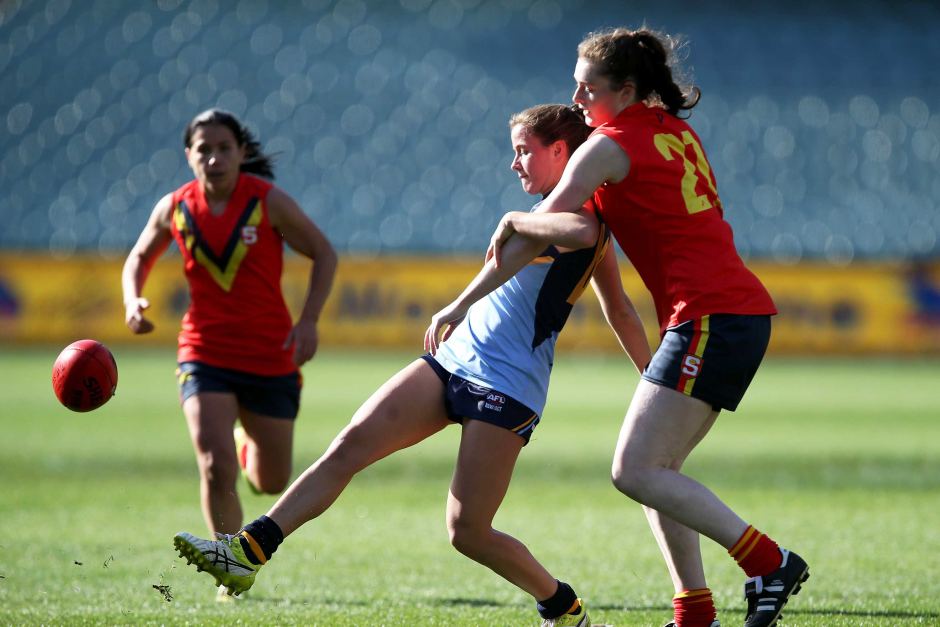High School Athletic Development – bridging the Gap (Part 2)
We delved in detail into why the High School sector is the key contributor that can correct the huge (and growing gap) between junior and senior (particularly elite) sport in part one of this discussion.
Just to reiterate and add in a few more points, to really drive this home, we will make a couple comparisons.
In the United States, college sport and facilities and services are obviously huge. This goes a long way to helping the athletes develop their potential through those ages, and bridge the gap to the professional level.

However, even at the level below that, high school, is an area that is very well developed in the United States (as well as parts of Europe including Germany, Denmark, Norway, Sweden and Spain.) The other thing with Europe, is there are many more sporting clubs and facilities with coaches outside the very top level, which aren’t available here.

Here there are virtually no options along the way until the professional level – short of having your own strength/performance coach. And in a market flooded with poorly qualified personal trainers positioning themselves as ‘coaches’ where do you go? Additionally, how many parents/students are going to pay $1.50-2 per minute for 1-2 x 1 hour sessions per week of 1-on-1 coaching? Even the small group training session option (which with a well qualified coach in a well set up facility is still very good) is beyond the affordability of many families.
So the levels that exist in terms of development – but especially physical development;
United States
Elite
College (Publically available/included in tuition)
High School (Publically available/included in tuition)
Private sector (enormous, well established in terms of quality and with brilliant facilities)
Europe
(Germany, Scandinavian nations, England, Spain, Italy, Eastern Block)
Elite
Semi-Professional (2nd, 3rd 4th divisions, plus regional – THEN comes amateur. Coaches are also full time or close to full time, right down through the grades in many European countries – not volunteers.)
High school (not as large as USA, bigger than Australia, but PE has actually maintained it physical nature – particularly in Northern and Eastern Europe.)
Private sector (not as large as USA.)
Australia
Elite
Junior elite (to an extent, but very sport specific focused)
Private sector (small – but growing)
Essentially, the elite, and that is it.
So players arrive at elite level (or very close to it) without a foundation. That is, they are pretty good with the sport specific ability, but the physical foundation that underpins this house of cards isn’t there.
High performance departments – be they clubs or sports institutes depending on the sport - will then work with these juniors as best as they can to play catch up, and fill the gaps. This then turns what should be the ‘finishing school’ into a pseudo-development academy, a frustrating issue discussed elsewhere. But at least some of these junior athletes will ‘get there’ physically eventually, as a result of gaining access to this at the highest level. But what about everyone else who never hit the elite level?
I would hope that the arguments against the fact that this gap exists, or that it is a serious issue for all sports – let alone footy (let alone health on a much larger scale – but we are performance focused) are melting away.
If you still do doubt that there is a gap here in our system – direct your attention to;
-Australia’s performance trend in the Olympic medal table over the last 3-4 years
-Australia’s record in international sports outside of Cricket and Rugby League (barely international)
-The ever increasing participation rates – coinciding with decreasing results
-The ever increasing number of certifications being handed out by the various sporting bodies, coinciding with decreasing results.
-Worst of all – the continually increasing injury rates in junior athletes (by junior athlete – I merely mean junior participating in sport at any level.)
It is crazy. And as you can see, even just with the mention of the broader health issue – this discussion could veer off into any one of a number of directions. We want to keep it about the junior to senior transition in football – and sport in general – as well as the key role that the high school sector has to play.
So lets assume that we are all on the same page – there is a big gap – and it is a big issue. And someone needs to fix it. And high schools give us the best possible avenue for the reasons mentioned above, and in part 1.
The important point about ‘when’
There is another point of discussion that it is important to make early on, before expanding of various discussions of the how in the discussions ahead. And that is the when. In a nutshell, ideally, this service is something that runs during the school day, rather than after school hours – or at least runs during the school day as well as after school hours too where needed.
Primarily, this should be another service in their development, rather than ANOTHER after school commitment, on top of sports training as well as the homework load – and part time/casual jobs for those who have those too. The overall commitment load that comes at the end of a 7-hour school day is already too high. To just add this on as another after school commitment is far from ideal.
The current after school-load for many 1st XVIII footy players (here in Adelaide) is;
-School training 2 nights a week
-Norwood/Glenelg/West Adelaide (whoever their SANFL zone is) 1-2 nights
-For the upper level junior elite – state training as well (which replaces SANFL nights)

Most nights of the week taken up with training already – and off course 99.9% of that training is football-specific. The question is, where exactly would these junior sports people fit in a couple sessions per week of athletic development/strength and conditioning after school? And of course these are the very students that such services are primarily aimed at.
Before school provides a more preferable option than after school, as it clashes with much less, however does come with 2 primary draw-backs;
1.How many young and developing teenagers will actually be gaining any genuine benefit when they have had to drag themselves out of bed so early?
2.The foot traffic that would pile in all in that same hour prior to school starting would negate the quality of coaching available to them.
Providing the service/program during school hours;
-Students are able to maintain a consistent year-round program regardless of their other after school responsibilities.
-The quality of the execution of their program will be better for having been done during the normal day some time.
-By running all through the school day, in set blocks (like lessons) will provide a greater quality of coaching (1 coach per 8-12 students rather than 1 coach per 40 at a time after or before school), as numbers are able to be capped, as students are spread over the day, and indeed the whole week.
-Sport-playing students also tend to be high-energy individuals who will benefit from physical activity during the school day, allowing them improved concentration in their other subjects. (The link between exertion and concentration is now well established – hence why it is crazy that less and less physical activity is done in schools.)
So what is next?
Having now recognised and been convinced of the gap and need for this service, then building on that by acknowledging that ideally this will be available during the school day at least as well as after school where required, the next question is ‘how do we accommodate this?’ Or ‘what does it look like, how do we run it?’ etc etc.
This isn’t an overnight thing that will just go from non-existent to 100% in operation with the click of a pen – at one school or the overall high school sector. So any introduction to this need not be a huge imposition – and we will explain this in more detail in the next part.
From a broader perspective – the high school sector as a whole – this service will most likely start with the upper level of the elite private schools – the progressive ones - (thinking Prince Alfred College here in Adelaide). The bigger/better funded and athletics minded public schools will follow next (I’m looking at you Henley and Brighton.) And after the leaders have pioneered it, others will start to follow.
It’s a changing world, and schools just as universities must adapt to provide relevant services of development, not stay mired in the 20th century way of doing things. So we will build on this discussion next time with some more specifics of how to go about both introducing as well as running this.

Strength Coach

